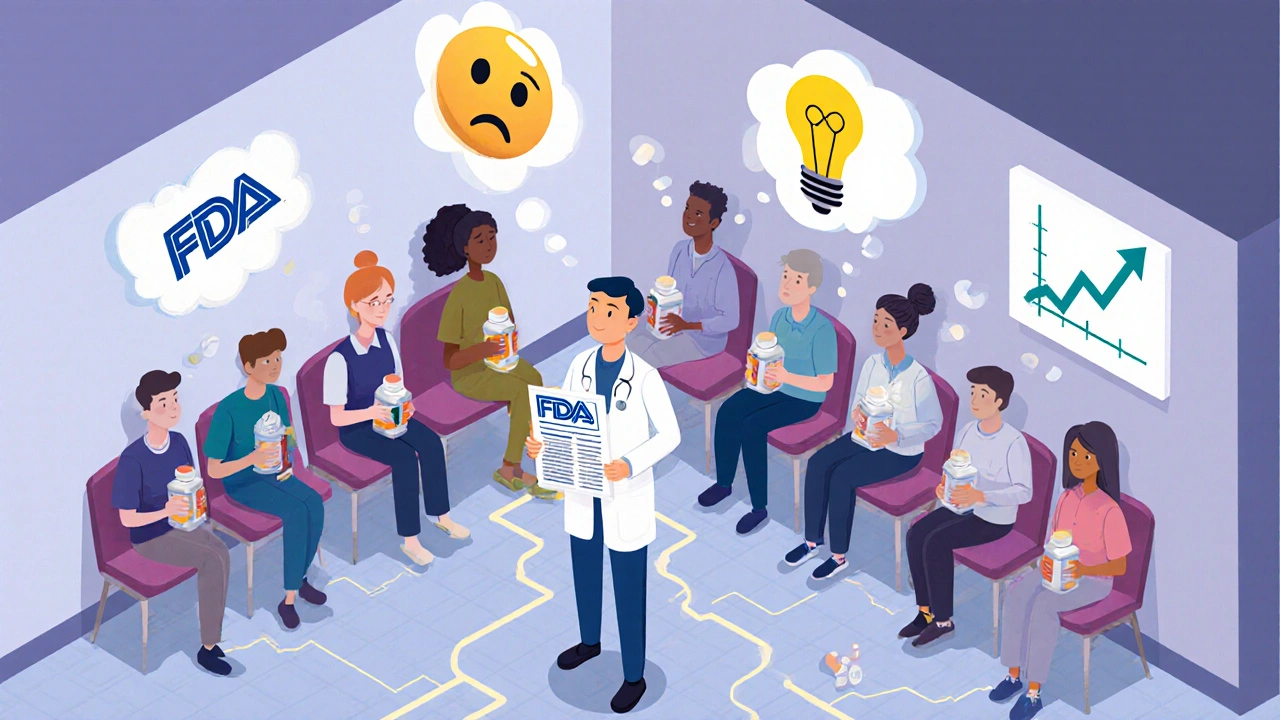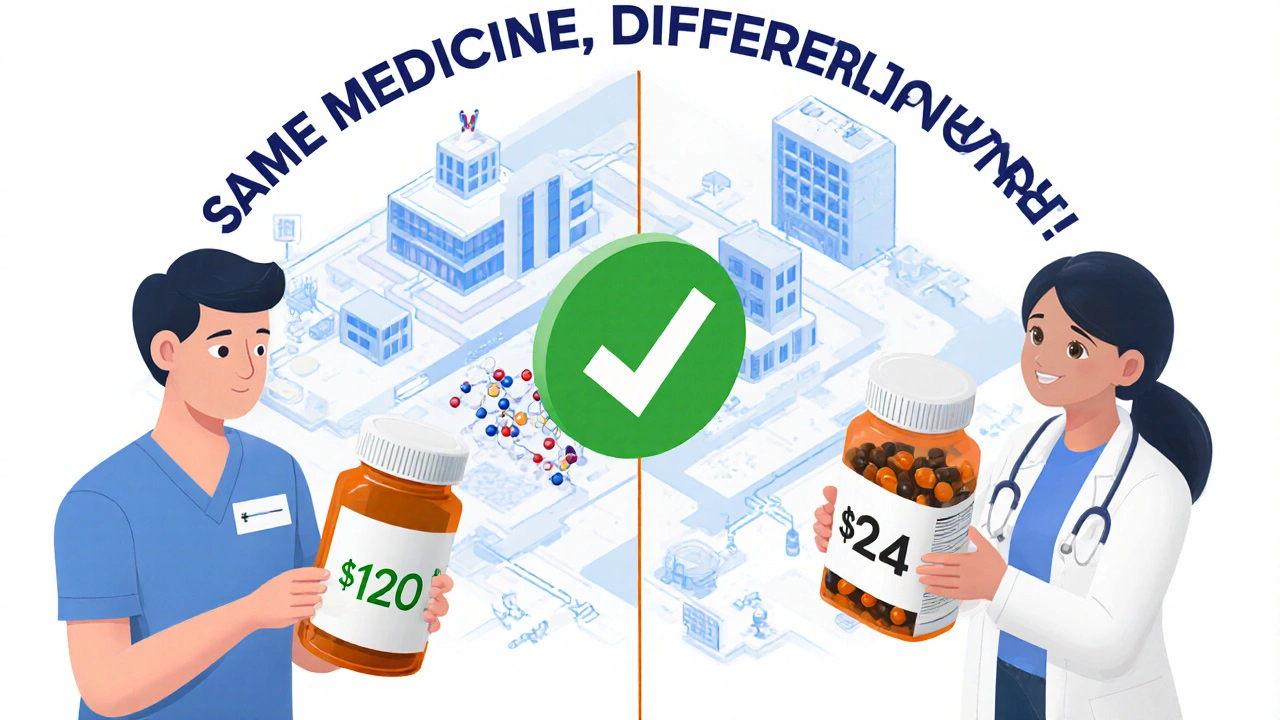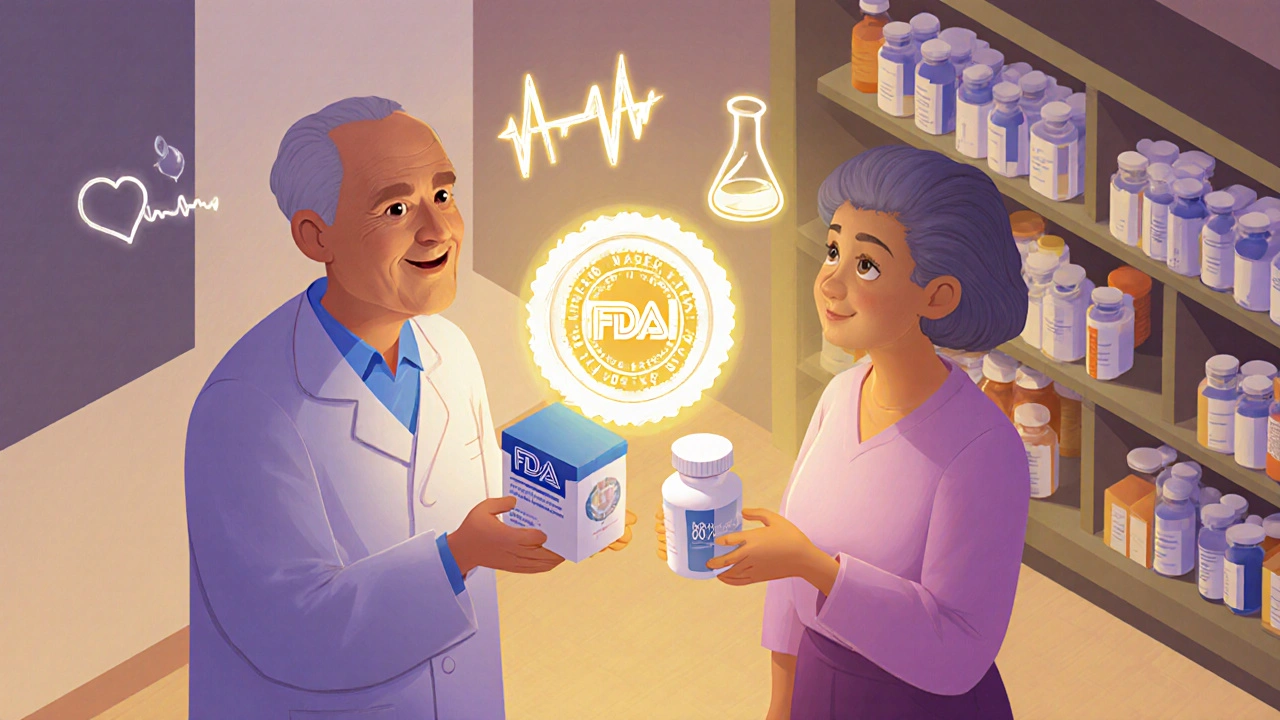When a patient walks out of the pharmacy with a generic version of their usual brand-name pill, they might not say anything. But inside, they’re wondering: Is this really the same? Is it safe? Will it work? Will it make me feel worse?
The truth is, generic drugs are not just cheaper-they’re scientifically identical. The FDA requires them to have the same active ingredient, strength, dosage form, and route of administration as the brand-name drug. They must also meet strict bioequivalence standards: their absorption rate in the body must fall within 80-125% of the brand’s. That’s not a guess. It’s a lab-tested, legally binding requirement. And yet, nearly one in three patients still hesitate to take them.
Why? Not because the science is flawed. Because the conversation never happened.
Patients Don’t Doubt the Science-They Doubt the Silence
A 2024 study in PLOS ONE found that patients who weren’t told about switching to a generic were far more likely to feel anxious, confused, or even betrayed. One patient on Reddit shared: "I didn’t know they switched me to generic Sertraline. I felt weird for two weeks. I thought the new pill was broken." That’s not a side effect of the drug. That’s a side effect of poor communication.
Research shows the biggest predictor of patient acceptance isn’t cost, not even brand loyalty-it’s whether a healthcare provider took the time to explain the switch. In fact, patients who received even a brief 2-3 minute explanation from their pharmacist were 36% more likely to feel comfortable with the substitution. Those who got no explanation? Only 63% were okay with it. That gap? That’s where trust breaks down.
Who Believes Generics Work-and Who Doesn’t?
Not everyone sees generics the same way. The data reveals clear patterns:
- Patients over 60 are more likely to trust generics-71% say they’re safe, compared to just 58% of those under 40.
- College graduates are twice as likely to believe generics are just as effective as brand-name drugs.
- Patients on Medicaid are 80% more likely to doubt generic safety than those with private insurance.
- Non-Caucasian patients report lower confidence: only 78% trust generics, versus 89% of Caucasian patients.
- People with low health literacy are the most skeptical-50% think generics are less effective or less safe.
These aren’t random opinions. They’re signals. If you’re working with older adults, low-income patients, or those with limited education, your approach needs to be different. You can’t just hand them a pamphlet and assume they’ll get it.
What Patients Actually Fear
Let’s be honest: patients aren’t afraid of chemistry. They’re afraid of feeling different.
When asked why they resist generics, here’s what they say:
- 29.5% worry about new or worse side effects
- 25.7% just don’t want to change what’s working
- 24.1% don’t believe generics can be as effective
- 20.8% say their health is worth paying more for
Notice something? Not one of these is about price. It’s about control, fear of the unknown, and past experiences. One woman told her pharmacist: "My brand-name blood pressure pill kept me steady for years. The generic made me dizzy. I switched back." Turns out, she was taking a different generic version the second time-same active ingredient, but different fillers. That’s not the drug’s fault. It’s a lack of follow-up.
For complex medications-like inhalers, injectables, or extended-release tablets-patients worry they won’t know how to use the new version. One study found patients hesitated to use a generic inhaler because the device looked slightly different. They didn’t know how to adjust. They didn’t ask. They just stopped using it.

What Works: Real Strategies from Real Research
So how do you fix this? You don’t need fancy tech or expensive campaigns. You need better conversations.
1. Say It Out Loud-Don’t Assume They Know
Start with a simple script: "I’m switching you to a generic version of your medication. It has the exact same active ingredient, works the same way, and is just as safe. The FDA requires it to meet the same standards as the brand name. Many patients save 80% or more without any difference in how they feel. Would you like me to explain how it’s tested?"
That’s it. Two minutes. No jargon. No assumptions. Just clarity.
2. Use the Right Words-Avoid "Generic" When You Can
Patients hear "generic" and think "cheap," "inferior," "second-rate." Instead, say: "This is an FDA-approved version of your medication." Or: "This is the same medicine, just without the brand name."
One study found patients responded 40% better when the term "FDA-approved" was used. They trusted the system, not the label.
3. Ask, Don’t Tell
Don’t just inform. Engage. Ask: "What are your thoughts about switching?" or "Have you had any concerns about generics before?"
This opens the door. It tells patients they’re not just a prescription number. They’re a person with valid worries. And when they voice them, you can address them.
4. Show, Don’t Just Tell
Bring up the FDA’s website. Show them the page that says: "Generic drugs must have the same quality, strength, purity, and stability as brand-name drugs." Point to the section that says they’re tested in the same labs, under the same rules.
Or better yet-hand them a printed summary from the FDA’s "Generic Drugs: Questions and Answers" page. It’s free, updated as of October 2023, and answers 50 common concerns in plain language.
5. Train Pharmacists to Be Educators, Not Just Dispensers
Pharmacists are the most underused resource in this whole system. A 2023 study showed that 85% of patients who got a detailed explanation from their pharmacist felt confident about the switch. Those who didn’t? Only 63%.
But here’s the problem: 72% of pharmacy chains still rush substitutions during peak hours. One patient on Trustpilot wrote: "I asked the pharmacist about my new generic pill. She said, ‘It’s the same,’ and kept ringing me up. I left confused." That’s not service. That’s negligence.
Every pharmacy should have a 2-minute protocol for every generic switch: introduce the change, explain equivalence, ask for concerns, offer a handout, and schedule a follow-up if needed.
What Doesn’t Work
Don’t rely on pamphlets alone. Only 62% of patients found them "somewhat helpful." Don’t just post a flyer in the waiting room. Don’t assume patients will Google it. Don’t say, "It’s cheaper, so just take it." That’s not education. That’s coercion.
And don’t ignore the small things. If a patient’s generic pill looks different-color, shape, markings-explain why. "The brand uses a blue dye. This one uses a different one approved by the FDA. The medicine inside is the same."

Why This Matters Beyond the Prescription
Generic drugs save the U.S. healthcare system over $370 billion a year. That’s money that goes to hospitals, to research, to care for people who can’t afford treatment at all.
But if patients stop taking their meds because they don’t trust the pill in their hand, those savings vanish. Non-adherence due to mistrust costs the system billions more in ER visits, hospitalizations, and worsening conditions.
Building confidence in generics isn’t about marketing. It’s about medicine. It’s about equity. It’s about making sure everyone-no matter their income, race, or education-gets the same effective treatment without being forced to pay more for a name they recognize.
What’s Next? The Data Says It’s Possible
Just 15 years ago, only 60% of patients were comfortable with generic substitution. Today, that number is over 90%. Why? Because providers started talking.
A 2024 machine learning study analyzed over 12,000 patient records and found that the single biggest factor predicting acceptance of generics was not age, income, or education-it was whether a provider had a conversation about it.
That’s the power of a few minutes. A few honest words. A little patience.
Every time you take that extra 90 seconds to explain, you’re not just selling a cheaper pill. You’re restoring trust in the system. You’re giving someone control over their health. And you’re making sure the science that works for millions doesn’t fail because no one bothered to say, "It’s safe. I promise."
Are generic drugs really as effective as brand-name drugs?
Yes. The FDA requires generic drugs to have the same active ingredient, strength, dosage form, and route of administration as the brand-name version. They must also meet strict bioequivalence standards-meaning they are absorbed into the body at the same rate and to the same extent. Studies show no meaningful difference in effectiveness or safety between generics and brand-name drugs for the vast majority of medications.
Why do some patients feel worse after switching to a generic?
In rare cases, patients report differences in side effects or effectiveness after switching. This is often due to inactive ingredients (like fillers or dyes), which can vary between manufacturers. For most drugs, these differences don’t affect how the medicine works. But for medications with narrow therapeutic windows-like blood thinners or seizure drugs-small variations can matter. That’s why providers should monitor patients closely after a switch and ask about changes in symptoms. It’s not that the generic is inferior-it’s that individual bodies can react differently to non-active components.
Can pharmacists switch my brand-name drug to a generic without telling me?
In 18 U.S. states, pharmacists are legally allowed to substitute a generic without notifying the prescriber or patient. But ethical practice requires informing the patient. Even if the law doesn’t require it, best practice is to explain the switch. Patients who aren’t told often feel misled, which can damage trust and lead to non-adherence. Always ask: "Would you like to know if a generic is being substituted?"
How do I know if a generic is FDA-approved?
All generic drugs sold in the U.S. must be approved by the FDA through the Abbreviated New Drug Application (ANDA) process. You can check the FDA’s online database, Drugs@FDA, to confirm approval status. Look for the "ANDA" number on the pill bottle or packaging. If it’s legally sold in the U.S., it’s approved. There’s no such thing as an "unapproved" generic sold in legitimate pharmacies.
Should I avoid generics if I’m on a complex medication like an inhaler or injectable?
Not necessarily. Complex generics-like inhalers, epinephrine auto-injectors, or insulin-must still meet FDA bioequivalence standards. But because delivery systems can vary, patients may need extra guidance. For example, a generic inhaler might feel different to use. Always ask your provider or pharmacist for a demonstration. Don’t assume you know how to use it. A few minutes of training can prevent dangerous mistakes.
Why do some doctors still prescribe brand-name drugs when generics are available?
Sometimes, it’s because the brand-name drug has a complex delivery system with no approved generic yet. Other times, it’s because the patient has had a bad experience with a previous generic. In rare cases, insurance or formulary rules may require a brand. But most often, it’s simply habit. Doctors don’t always realize how much patients worry about generics. When providers are educated on patient concerns, they’re more likely to prescribe generics confidently-and explain why.
